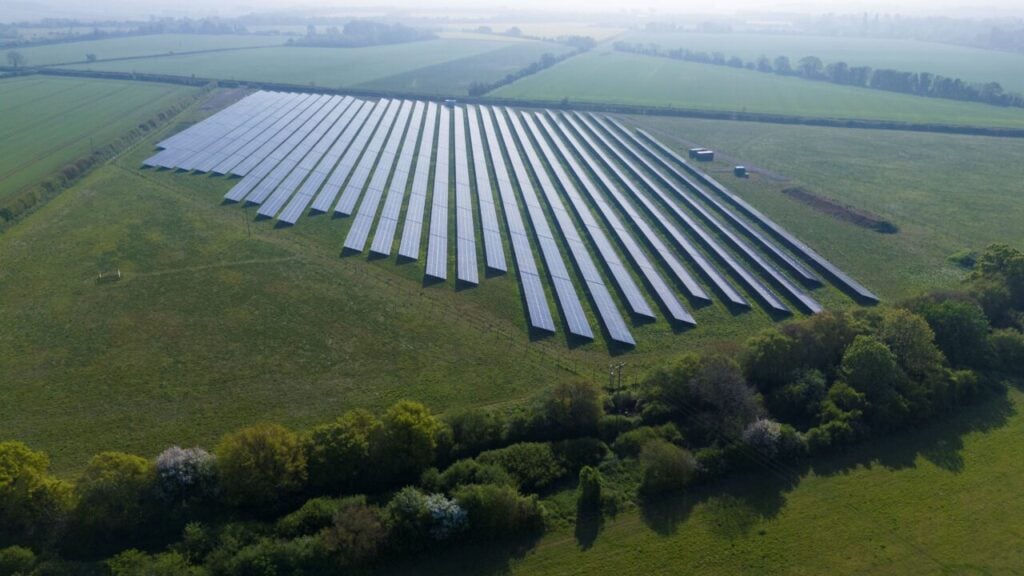
Blenheim Estate has become a net generator of green energy following completion of a solar power plant covering 20 acres of the estate’s land.
The 7MW Weaveley solar park is the first ‘field-scale’ project to be built by Blenheim Estate as part of its plan to become net zero by 2027. The power plant is on land north-east of Woodstock.
Over the 30-year lifespan of the development, sheep grazing will take place around the panels. The site will also be open to school visits.
The ground mounted solar PV development was built by Bouygues E&S Solutions Ltd. Work began on the site in late 2021, with the Blenheim Estate saying at the time that the project would be completed by spring of 2024.
However, citing “connectivity issues” with Scottish and Southern Electricity Networks, work was paused until August 2023.
Estates managing director Roy Cox said the project has been a “fantastic learning process which we can apply to larger infrastructure projects in the future”, adding that data and learning “good and bad” will be shared as the site matures.
Cox also noted an improvement in biodiversity at the site: “This land previously had zero biodiversity and was exhausted from years of intensive farming, but we’re already seeing an uplift in the site’s biodiversity, thanks to a number of measures including the flower and nectar rich mixes already sown, wild bee habitats and thriving hedges for food and shelter.”
Named a UNESCO World Heritage site in 1987, the Blenheim Estate joins a stock of historical buildings in the UK to adopt renewable energy generation technologies.
Sandringham solar
Last year, Sandringham House, owned by King Charles, submitted a planning application to the Borough Council of King’s Lynn & West Norfolk, for a solar PV development with cumulative generation capacity of 2.1MW.
The solar system will supply power to the three main power consumers of the Estate – the sawmill, visitor centre, and house. The existing infrastructure will be upgraded and adapted as necessary as part of the project.
The building itself already has a rooftop PV array installed. Edinburgh Castle had solar panels mounted to its roof in 2022 by AES, which also installed solar thermal at Balmoral Castle Royal Estate. The 31.5kWp system is surrounded by a high parapet, meaning the panels aren’t visible from the castle grounds or other vantage points within the city.

